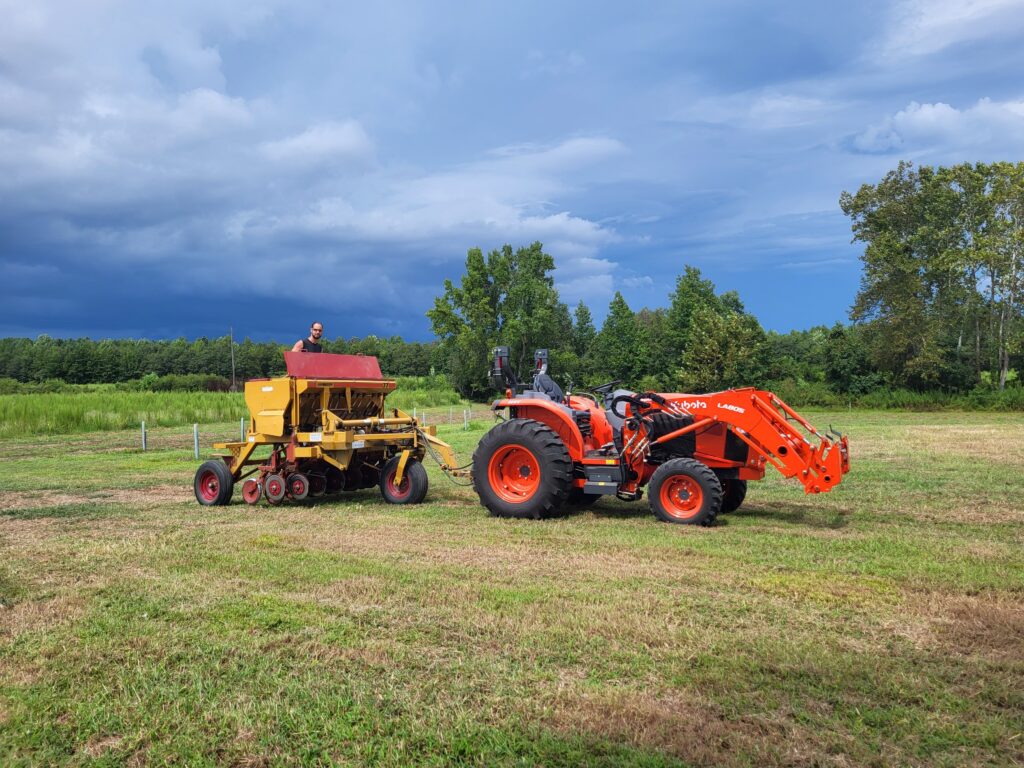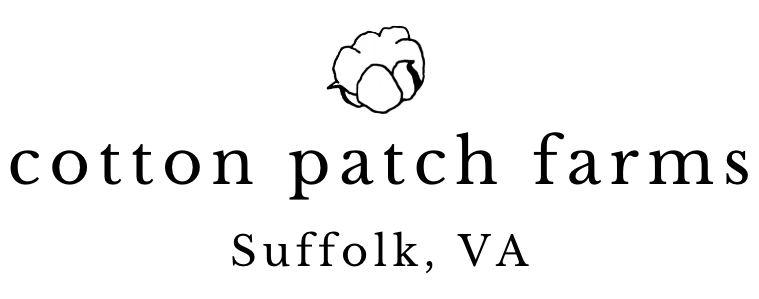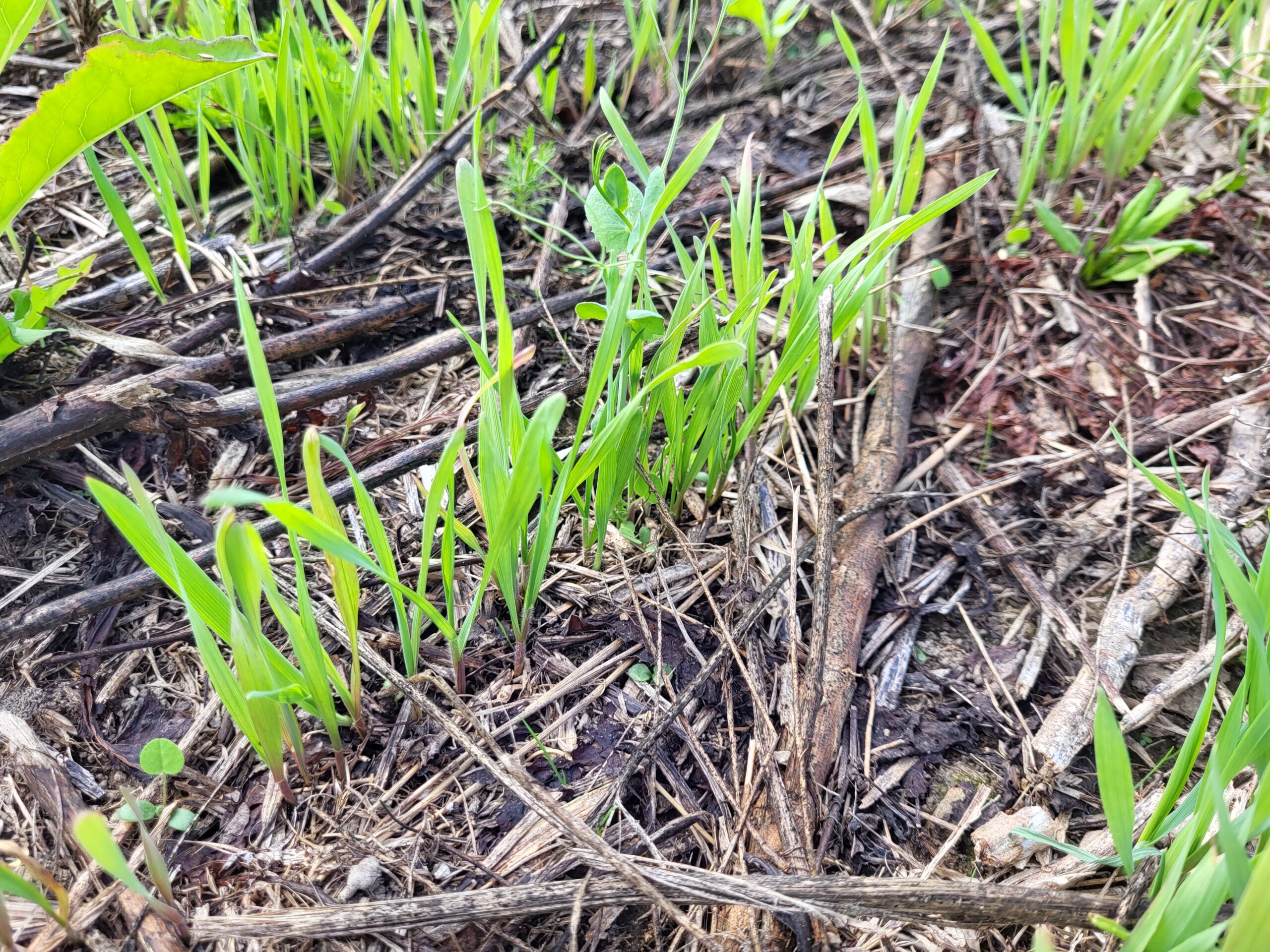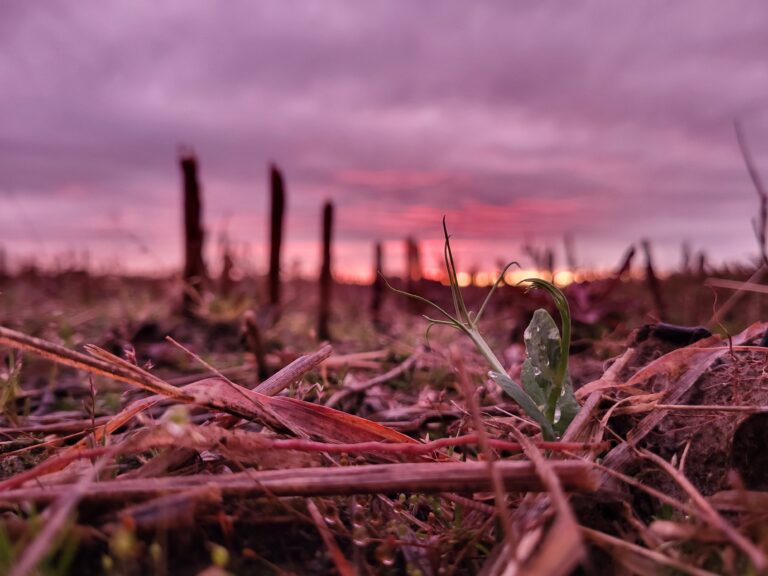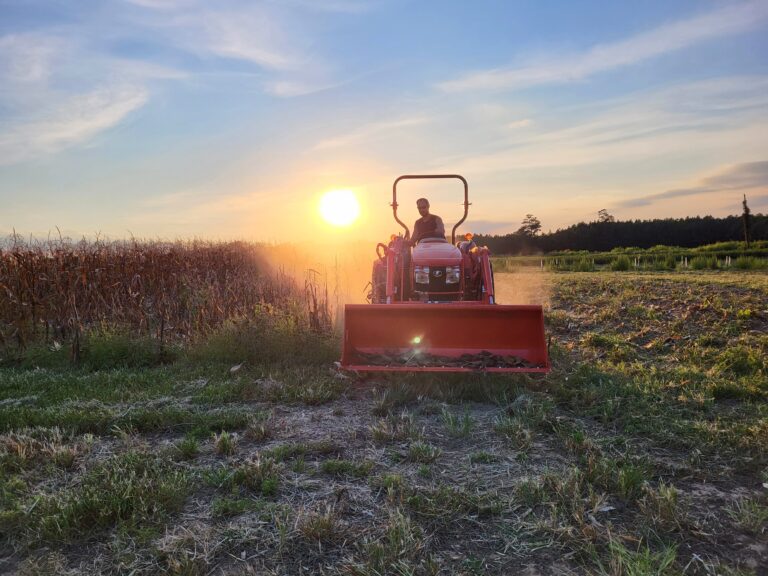First, we had to understand our obstacles.
This is our second year planting fall cover crops in our six acre pasture. This particular plot of ground has been in no-till soybeans up until last year. I’m a fan of soybeans as a forage for deer, but this field suffered from erosion and honestly didn’t grow a very good crop of beans. A light rain would make the ground slick and greasy and a few hours of sun would make it hard as a rock. There were several large areas where the beans simply wouldn’t grow. We knew that we’d need to change things up in order to fill in those bare patches and make some ground that can produce.
Last fall (2022), we rented a no-till seed drill from our local Peanut Soil and Water Conservation District and drilled a simple mix of annual rye grass, crimson clover, and vetch. While rye grass might not be a great soil builder or produce good forage, it’s pretty cheap and easy to find. I didn’t want to pay fescue and orchard grass prices in case it was a failure. Even though we only only got a little bit of rain last fall, we ended up with a pretty solid stand of rye grass all over, while the clover and vetch were only a real success in the best ground and in areas with natural drainage.

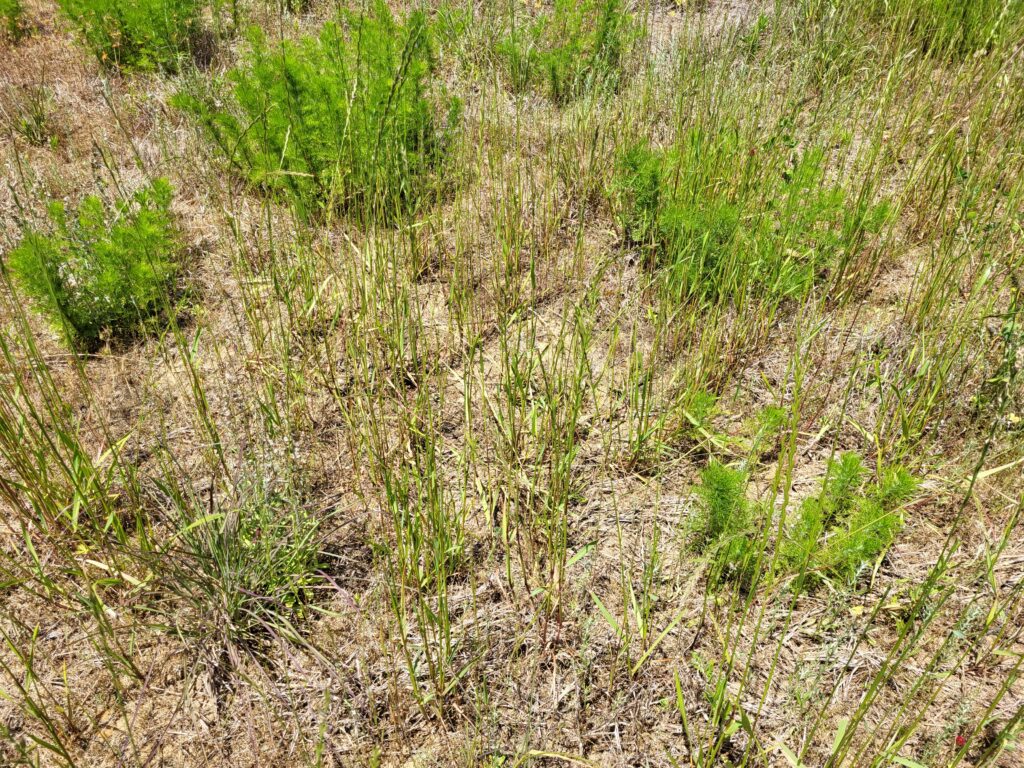

This spring, we went full in and broadcasted a 10-way mix of about 500 lbs of spring and summer annuals, and it was pretty much a failure. The only emergence we had was on the fringes of the field, and by June, the field was overtaken with dogfennel, ragweed and horseweed. We’re not too sure why we had such a poor stand but we have a few hunches. We planted as early as we dared but ended up with an unusually cool and prolonged spring. We did try to pick seeds that would broadcast well, but some would have done better being drilled. Rye grass has allelopathic effects which might have been enough to inhibit germination or plant growth. Personally, I think that spring broadcasting into a recovering piece of ground might have been the main issue.
I did have success with fall broadcasting a wildlife mix into this same field on a small scale back in 2022. My dad has always said that it’s better to plant grass seed in the fall than in the spring. Yet another case where Dad is always right.
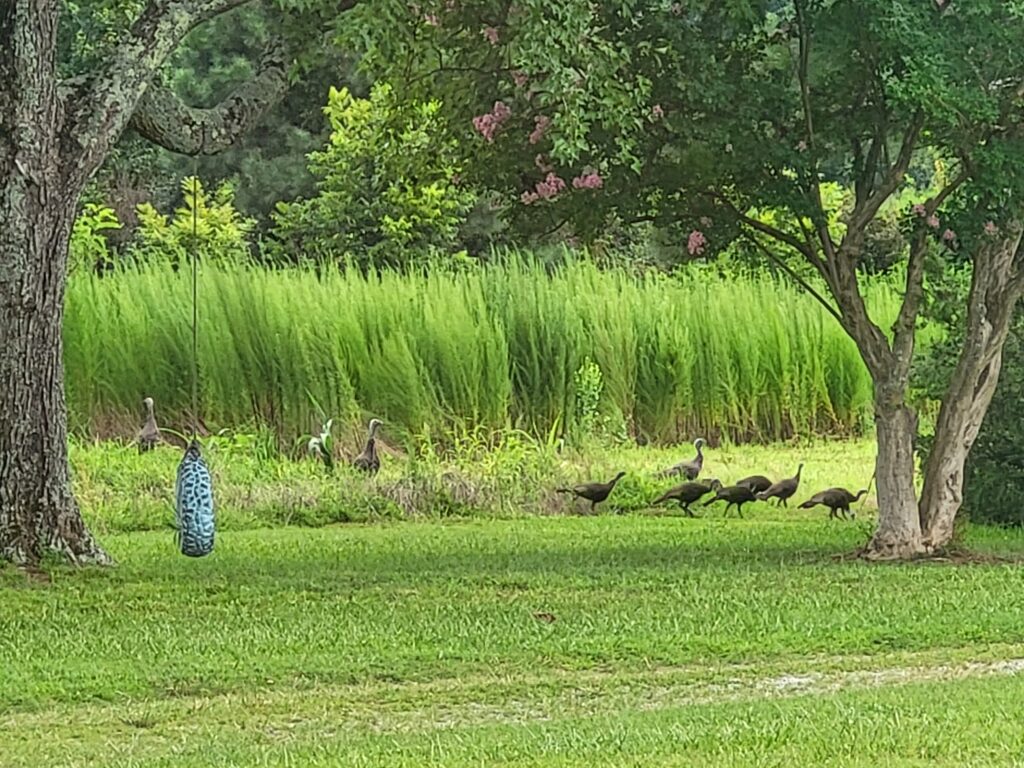
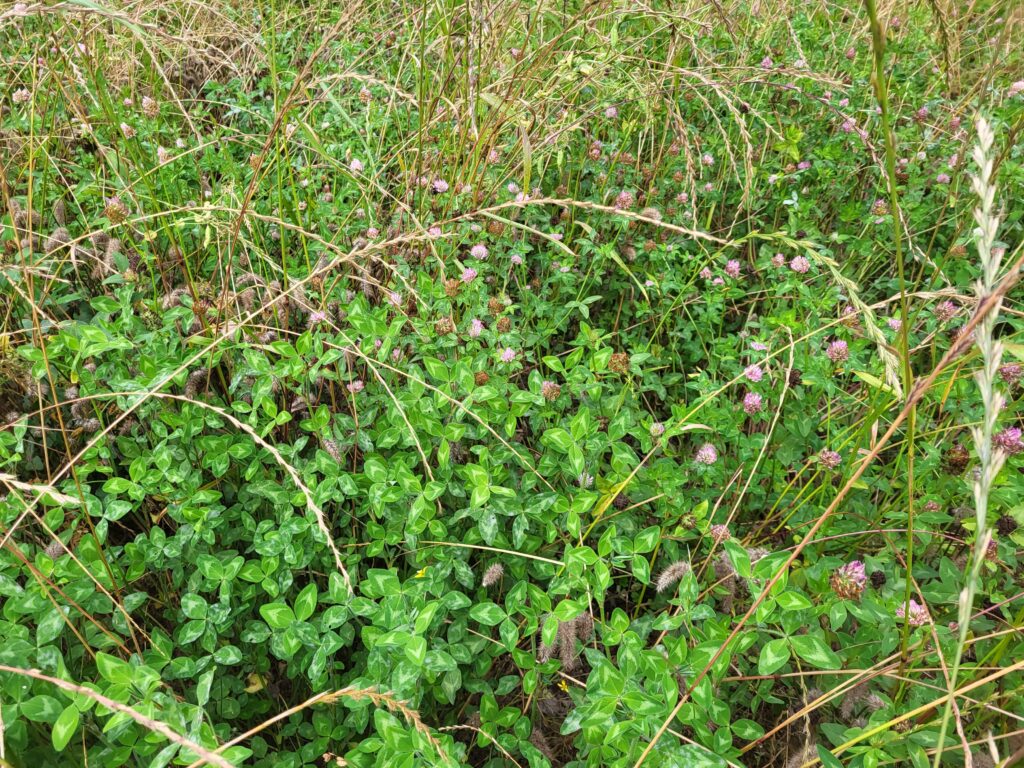
Then we went for it.
With all of this in mind, we decided to drill another variety of cover crop seeds just a few weeks ago. I have had success with Austrian winter peas, oats, and red clover, so we included these in our mix. I have been hearing and reading about cereal rye being a real winner of a cover crop although we don’t see it much around here, so we planted six bushels of that as well. Our mix consisted of feed oats, cosaque black oats, cereal rye, daikon radish, turnip, Austrian winter peas, and red clover. Not sure how it happened but we ended up planting about 1200 lbs of seed total. A lot of it was grain bin oats and cereal rye which are relatively cheap.
We’ve had good emergence and some nice cool weather, so the fall planting is off to a good start.
There’s always something to write home about.
Each time I plant, I learn something new. One of the big lessons is getting to know your equipment.
Last fall I learned to plant like-sized seeds together versus grouping seeds of the same variety. Vetch is a legume so I had it in the legume seed box along with the clover. I had trouble with the vetch cracking as it came through the seed wheel. Now I group seeds by size and make sure that the seeds are small enough to feed through the seed wheels.
This fall I made the mistake of trusting the drill’s recommended seed meter setting for cereal rye. I was aiming to plant 1 bushel per acre. The first spot I planted was a 1/4 acre test plot that we just took out of row crops last fall. I didn’t check the seed boxes until after the test plot was planted, figuring not much could go wrong in that small amount of space. After the test plot was planted, I hopped off the tractor and opened the seed boxes. Legumes looked good, oats and peas looked good, cereal rye was just about empty. I figure I planted about 8 times the rate I had intended to plant. I just hope the stand isn’t too thick that it out-competes itself.
Signing off.
